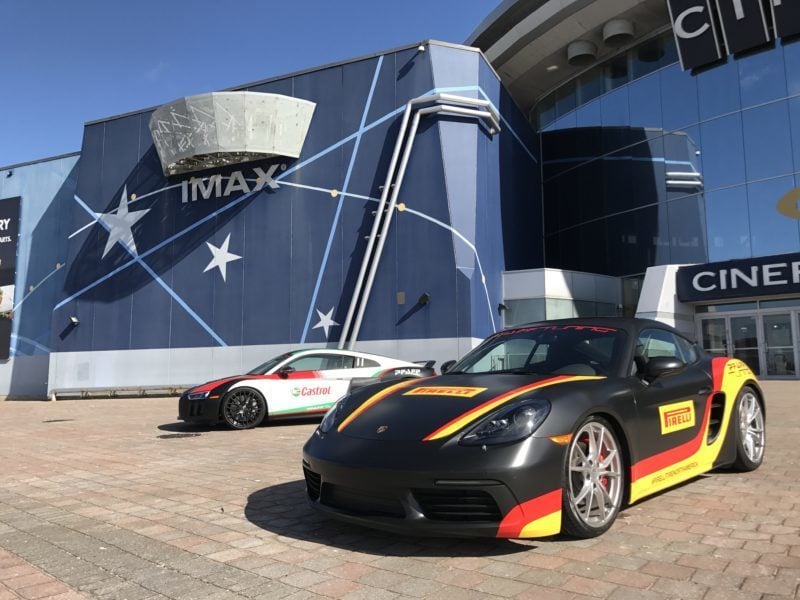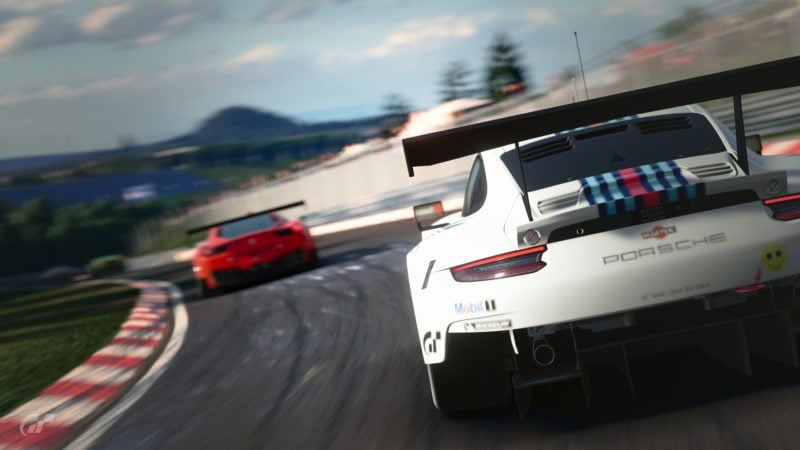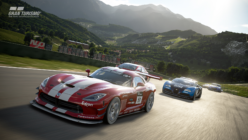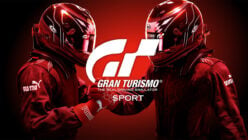To think, it could’ve all ended up as a film festival.
The WorldGaming Canadian GT Sport Championship wrapped up a few days ago. A man from Barrie walked away with a five-digit prize package after a day of intense racing in game.
As the first big racing esport live event of the year — for the genre, and GT Sport itself — WorldGaming’s Canadian Championship did a lot right, and could provide a reliable template for future events abroad.
Wait, Wait… Did You Say a Film Festival?!
Yes I did. On the day of the big finale, I talked with Niall Mulholland, Media Marketing Executive Director at Cineplex Media. A self-professed racing fan, Mulholland revealed the plan with Pfaff kicked off in 2016. “It actually started out when Pfaff approached us as an exhibitor to do a movie festival around racing itself,” he said, “some of the classic movies, Le Mans, Grand Prix, stuff like that.”
As talks progressed, Pfaff became interested in Cineplex’s esports operations (it owns WorldGaming). The program was only a year old at that point, focusing mostly on first-person shooters, but as Mulholland tells it, that was about to change:
“All the stars started to align in the summer time when GT Sport announced they were going to carry Porsche as a marque. It was obviously the game that we’d want to do, that we’d prefer to do. And then working with the Pfaff Motorsport team, their downtime is December to February. So what happened was it coincided with when we wanted to run the event, and Sony being one of our partners, everything came together.”
The rest, as they say, is history.

Authenticity: Setting the Tone
As Niall and I chatted, one word kept coming up: authenticity. It’s a potential trigger word in some sim racing circles, especially with regards to physics. I’ll get to that later — spoiler alert, it will be divisive — but what the event really focused on was the racing atmosphere, and making it inviting to a broad audience.
It started with the location. A big theater offers plenty of foot traffic, and a handful of sports cars (courtesy of Pfaff) parked out front certainly doesn’t hurt. Inside the lobby there was a full VRX motion rig, and a row of PS4 booths for curious onlookers to try GT Sport themselves.
Splash Marketing, a local company and WorldGaming’s exclusive activation partner, tied it all together. The team from Splash brought in dozens of scrubbed racing tires and other pit-lane paraphernalia. Grid girls — hey, this isn’t F1 — and per-driver refs made this feel like a serious event.
It seems to have worked: the night before, Porsche Motorsports North America CEO Daniel Armbruster flew in to catch the action.
Pfaff proved an integral main sponsor, too. As a purveyor of enthusiast brands — its stable includes not only Porsche, but Singer, BAC, McLaren, and Pagani — it’s ideally placed for building brand loyalty via gaming. In fact, that’s how some of the folks at Pfaff started out. “I grew up playing Gran Turismo,” Laurance Yap, Creative Director at Pfaff told me. “I have a passion for cars because I played with them in video games, and I think I’m not the only one.”
As a Canadian company with over 50 years of history, Pfaff brought a level of legitimacy to the event. When big companies put on events such as this, there can be the fear that they just won’t “get it” — see the troubled Visa Vegas eRace of early 2017. But that wasn’t the case here; there was a palpable sense of passion, and of wanting to share that with others. As a constant presence in sports car racing, Pfaff also offers that same virtual-to-reality synergy Gran Turismo players will recognize from GT Academy. Yap explains:
“For Pfaff there’s two major things we wanted to accomplish. One is to really tell our story of driver development. We’re a company that’s nurtured Canadian drivers throughout our history. Guys like Scott Goodyear, Ron Fellows, and more lately Chris Green and Scott Hargrove, we’re always trying to develop new Canadian driving talent. And actually we really see a link between real driving talents and virtual driving talents. Our drivers now practice on sims so there’s a driver development story that we wanted to tell. And maybe we’ll try to get a couple of these guys behind the wheel of a real car.
“The other thing was really to reach out beyond our typical car dealership target audience — which is very focused on selling cars — and really engage with younger people and hopefully build a generation of car enthusiasts that follow us. We’re a company that sells very enthusiast-oriented brands, and its very incumbent on us to make sure the passion for cars stays alive.”

The Format: It’s For the Viewers
This is sure to ruffle some feathers, but here it is: nobody watching at home cares how accurate your tire carcass simulation model is.
Over the course of the event, the Twitch stream would occasionally descend into complaints over the lack of tire wear or damage. If it wasn’t that, it was about the race length (15–20 minutes each).
Now, I’m not saying future racing esport events can’t introduce those features. But for the genre to truly break into the mainstream, the more digestible format is key. For someone just tuning in, the races on Sunday were easy to make sense of. Sure, that was no doubt helped by the excellent commentary from our own Tom Brooks and AR12’s Nick Andrew. But it was also straight-forward. There’d be no random breakdowns, no race-ending damage, and no arcane tire strategy to make sense of.
It also made for closer racing. These are guys at the top of their game; they could afford to sprint the entire race length. An hour or two of racing would’ve spread the field out, and we would’ve seen players coasting knowing they had a secured spot. Where’s the fun in that?
In one race, Dragon Trail’s notorious bus-stop provided a nasty pile-up. With full damage on, that would’ve spelled the end for a solid portion of the field. Yay, how exciting, said the parallel universe people that just stopped watching the Twitch stream, or got up for a washroom break at the theater.
Meanwhile, here in our timeline, people were out of their seats with excitement during that roller-coaster final at the Nordschleife.
These were the fastest sixteen GT Sport drivers across the country. No matter what anybody says, it takes serious skill to get to that point. Games like GT hit a sweet spot between realism and accessibility, and I firmly believe that’s important for racing esports in particular. Look at all the other games that thrive in the esports realm; how many of them are bogged down with concerns over addressing every last facet of realism?
The format also put butts in the seats. The atmosphere, the experience with the motion rig, watching these guys all do what they do (and interact with one another); there’s value in the live events. Twitch will naturally be a big draw in terms of the audience, and that’s fine. But for less than the price of a movie ticket, I’d choose the live event every time, travel permitting.
The Potential For Expansion
The biggest takeaway from all of this was how easily other regions could apply the same formula. Even if it were to run separate from Polyphony’s own FIA Championship plans, the idea of a year-end final where each region has its own squad is tantalizing. I can’t wait for the Canadian follow-up.
Prizes and rewards are fantastic too, of course. But at the end of the day, it’s something that Niall said that stuck with me. When I asked him about the blurring of the lines between the real and virtual, his answer encapsulated the collaborative effort of the event:
“Laurance said to me ‘you know, the online audience and the in-theatre audience walk away with a passion for motorsports and a passion for cars. That’s the goal.'”
As ever, we love cars.
Featured image courtesy of the WorldGaming Twitter.
See more articles on Opinion Piece, Pfaff, and World Gaming.










